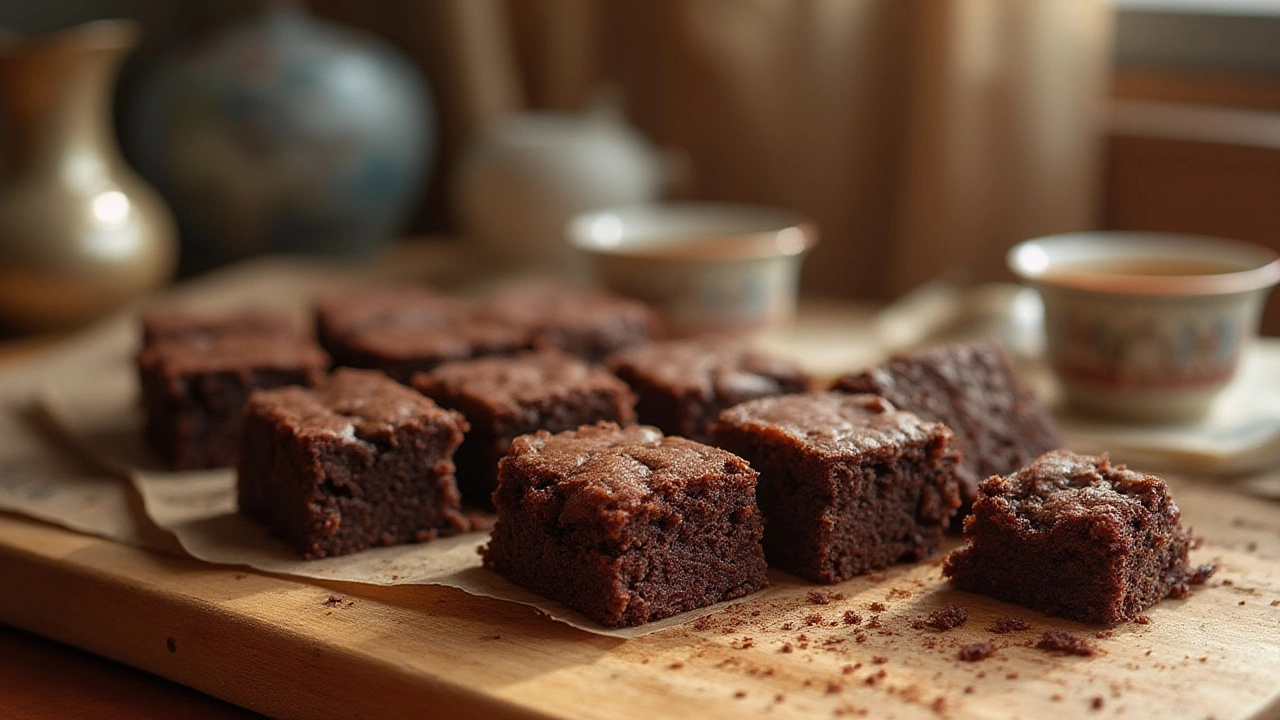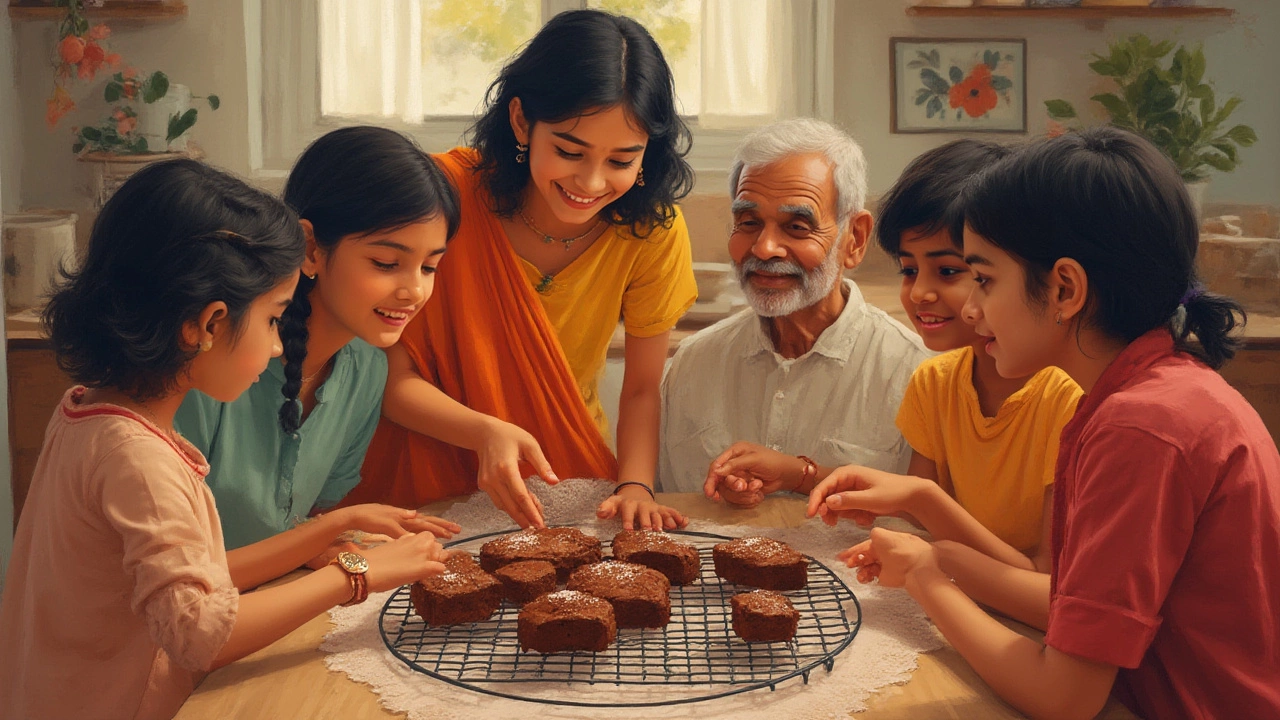Ever opened the oven and wondered: did I just bake fudge, cake, or something in between? If you’ve been burned by dry, cakey brownies—or spooned up raw batter disguised as dessert—you're not alone. There’s something about brownies that invites passionate arguments: team fudgy or team cakey. But before you even dare to cut into a pan, you need to recognize how a truly perfect brownie should look the second it emerges from the oven. Truth is, most home bakers rely on guesswork. Peek under that crackly top, though, and the right answer is hiding in plain sight.
Visual Clues: What the Top and Edges Reveal
First thing’s first: eyes beat timers. Experienced bakers rarely set their entire trust in minutes on a recipe page. The real magic is in how a brownie looks. The top should be glossy with a thin, crinkle-like crust. Think of that slightly shiny finish famous from bakery brownies or Instagram videos you watch on a loop. If you see a powdery, matte surface, sorry—it’s likely overbaked.
The edges tell another story. Well-baked brownies shrink ever so slightly away from the pan, forming a firmer “crust” edge compared to the soft center. If the edges are pulling away, you’re on the right track. Too much gap? It's baked too long. No gap at all? Check the center—the batter might still be runny.
Brownie centers should not wobble like jelly. Press gently; what you want is a springy, barely set texture under the fingertips (don’t use a toothpick unless you want to bake confusion right into your dessert). If the center sinks or still juggles, slide the pan back for another minute or two, but don’t walk away.
The Texture Factor: Fudgy, Cakey, or Chewy?
Texture divides the brownie world, and each type has its unique look fresh from the oven. Fudgy brownies — often packed with chocolate and little flour — look dense and moist. It’s common to see a bit of shine along a knife’s edge when you slice into them. They give slightly to pressure, and the interior will look richer and darker than cakey counterparts.
Cakey brownies, on the other hand, rise with the help of more eggs or baking powder. You’ll spot a more uniform crumb—almost like a chocolate cake but with a signature thin top layer. These tend to have even browning throughout, and if you cut into the pan seconds from the oven, the knife comes out almost clean.
Chewy brownies split the difference. The crust might gossip both ways—shiny but slightly thicker—and when you tear one apart, you’ll spot tiny air holes but also get that ever-satisfying bend. Want hard data? A
| Type | Flour/Binder | Fat | Texture |
|---|---|---|---|
| Fudgy | Low | High (butter/chocolate) | Dense, Gooey |
| Cakey | Medium-High | Low-Medium | Light, Open Crumb |
| Chewy | Medium | High + Sugar | Flexible, Chewy |
God bless whatever camp you’re in, but don’t ever expect fudgy brownies to feel done when they’re hot out of that oven; carry-over cooking will finish the job as they cool. Pulling cakey brownies a little later is usually best—they don’t mind a few extra minutes.

The Scent: Trust Your Nose
The kitchen’s aroma always gets there before you. When brownies fill your home with a deep, chocolaty scent that’s richer than the dough phase but not yet nutty or bitter, you’re in sweet territory. If you overbake, sugar can caramelize at high heat, pushing the aroma from brilliant to burnt in minutes.
There’s a good reason professional bakers rely on this trick. As chef Alice Medrich once said,
“The perfume of chocolate just turning from dough to pastry is your final signal to check.”She’s not wrong. Open the oven at your nose’s signal, and you’ll rarely burn a pan again.
Brownie Doneness Tests: To Toothpick or Not?
This might shatter a few traditions, but the old toothpick-in-the-center test isn’t always best for brownies, especially for fudgier recipes. Stick in a skewer and you might panic at the streak of goo—except what’s on the stick is what makes a brownie glorious: molten chocolate, not raw egg and flour.
So what then? Judge by these clues:
- Check the shine: The top crust should sparkle; if too dull, it might be dry.
- Press lightly: It should spring back, not collapse.
- Listen: Yup, you heard me—listen. A gentle crackle means the crust is set.
- Jiggle the pan: The edges should barely move, the center can be soft but not watery.
If you must use the toothpick trick, expect moist crumbs (not wet batter) when you pull it out. Never wait for a dry toothpick in the center unless you’re after a cake, not a brownie.

Slicing Brownies: When Is the Right Moment?
The hardest part is waiting. Hot brownies will fall apart. Fudgy ones set in the pan as they cool, so they must rest at least 30 minutes—ideally a couple of hours. For perfect, clean-cut squares, pop the cooled pan into the fridge for 15-20 minutes before slicing. Wipe your knife between cuts to preserve those sharp lines. If you see a glossy, just-set center in the middle piece, you nailed it.
Here’s a rule to live by: If your brownies smell amazing, show a crackly top, and don’t jiggle, they’re ready—pull them before nerves (or your oven timer) trick you into baking them to death. The magic isn’t just in the recipe, but in recognizing that decisive moment when your batch has crawled out of the molten stage and entered brownie bliss. That’s when you know they’re done.